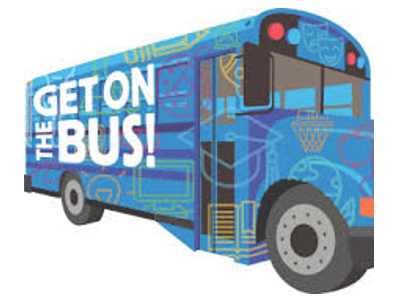Reaching the destination: coping in injury rehabilitation.
Having worked in elite sport for over twenty years, I have been part of and observed both successful and not so successful athlete rehabilitation journeys and as a practitioner felt the positive and negative emotions that come with being part of that. In more recent years I have taken time to reflect on these experiences, trying to better understand the ‘why’ behind it, in pursuit of consistent success in rehabilitation.
Taking the physical component to one side and focussing on athlete well-being and rehabilitation delivery, it seems previously my observations and feelings were based on perceptions and actions by either myself or the athlete. Through my eyes I saw it as what I could do for or give the athlete, rather than a relationship between us.
Historically, physiotherapists would initiate treatment plans based on their knowledge, that patients would follow. This itself leads to a relationship dominance tipped firmly in favour of the physiotherapist and driving what I previously described as the need to provide for the athlete. In the current world of sports medicine, where stakes are high for both the practitioner and athlete, this relationship balance has reversed, whereby many athletes will bargain with their therapist about treatment options and are able to choose whether to follow the advice provided or seek treatment elsewhere. To that end the autonomy of a therapist or coach and athlete compliance can be compromised, leading to conflicts in the therapist/coach-injured athlete relationship.1
Sports injury psychology has identified this and to better understand this interpersonal relationship, it has been considered three aspects; care, conflict and compatibility.2 Outside the context of sport, care has been identified as incredibly important, however in sport the term ‘working alliance’ may better describe the relationship in which therapists /coaches and athletes exist. An optimal relationship should allow for mutual collaboration to help the athlete manage their injury, by creating an environment of trust, working towards a common goal, forging an emotional bond between therapist/coach and athlete, and mutually agreeing upon goals and treatment options.1 This represents a relationship balance between therapist/coach and athlete and requires not only subject knowledge of a practitioner but the soft skills to achieve a working alliance within their clinical practice.
Bringing this to life when working with injured athletes led me to introducing a concept I refer to as ‘get on the bus’. Years of travelling with sporting teams involves many bus journeys to and from training bases and competitions. For an athlete being on the bus is a desired place to be, as it implies they are recovered from injury and fit to perform. Before exploring this bus concept further, I will turn to the world of leadership where John Blakey describes the aims of a leader:
‘Like all good journeys, our aim is to arrive promptly at a worthwhile destination but we also want to travel in comfort and ease. We want to go fast enough to maintain a sense of progress, but not so fast that we miss something important’.2
For me this exemplifies the aims of the ‘get on the bus’ concept which is essentially a rehabilitation journey for an injured athlete, which the therapist/coach and athlete should navigate together. This journey will now be discussed in four progressive stages.
Plan the route: ‘arrive promptly at a worthwhile destination’
At the heart of this is establishing the correct goals and mindset which are prerequisites for defining the journey ahead. This can be best done once athletes have had time to cognitively process their injury and seek meaning in the experience. They can then identify positive outcomes as a consequence of injury, thus giving an opportunity for potential growth through adversity.3
Goals need to be tailored to the athlete and their training needs, with a process driven system allowing achievement of the desired outcomes. From this goal setting, accountability can grow whereby clear roles and responsibilities for key stakeholders can be identified. Realistic goals are pertinent to this process to ensure success, thus potential limiters or speed bumps as they are referred to in this concept, need identifying as they may interrupt the journey. Experience and expertise of the practitioner can help the athlete identify potential speed bumps they may experience with regards to their injury and rehabilitation. Conversely the athlete can support the process through discussing any limiters they are aware of in themselves, which will help build a transparent relationship, something that is a highly regarded quality.2 In the context of injury rehabilitation this may be related to physical components such as healing times, athlete beliefs around injury, pain, rehabilitation and training, and social factors such as lifestyle, for example, support networks in terms of family, friends and colleagues.
Build the bus: ‘want to travel in comfort and ease’
This refers to what is delivered through the rehabilitation process and is progressive in nature. For example, coaching in rehabilitation may start by establishing movement competency in foundation movement skills, referred to as building the chassis in this model. Then more specific movement patterns and load can be applied to achieve the desired physiological adaptations for the outcome, referred to as building the Engine.
The adaptability and art of coaching underpins this whereby the optimal platform for delivery can be set through manipulation of the athlete, task and environment, depending on the person presenting in the moment and the desired outcome of a session.
Fill the bus: ‘go fast enough to maintain a sense of progress’
There is a growing body of academic writing and research around the psychosocial impact of injury whereby injury can affect more than the injured; it often holds health-related consequences for networks of family, friends, team-mates, coaching staff and even the wider community.1 A successful rehabilitation journey needs to cater for the physical, psychological and social needs of all involved. Firstly, the athlete needs to surround themselves with people with appropriate expertise to support them in fulfilling their goals, whilst driving their own bus. This refers to an athlete centred approach whereby still maintaining a relationship balance, an athlete is empowered to lead the journey or ‘drive the bus’, with guidance from subject experts such as therapists or coaches. Encouraging athlete curiosity so they understand the ‘why’ of their journey will encourage athletes to take some ownership and drive their bus. As a therapist/coach, often on one or more athlete buses, they must consider their own physical, psychological and social needs, to ensure they are in an optimal place to support others.
Central to this whole concept but in particular this aspect is the ability to build relationships. Getting to know the athlete as a person, outside their athletic role, and trying to understand their purpose & beliefs, will help inform the process and accommodate any psychological and social needs they may have, whilst developing a relationship and trust.
The latter, trust, in my opinion deserves some attention at this stage. In the context of elite sport, trust in those around you can be a great comfort and support the therapist/coach to successfully deliver. As a practitioner, you can’t control whether someone will trust you but trustworthiness influences this outcome and you can control this. As John Blakey explains: you can choose to be trustworthy but only others can decide whether they trust you. Your goal is to become worthy of the trust of others.2
Service the bus: ‘but not so fast that we miss something important’

This refers to risk mitigation, which can take various forms. Firstly mitigating against re-injury or new injury risk to the athlete can be through physical, psychological or social profiling. Ongoing reflective practice and review of the planned route will also support this.
As a practitioner on an athlete bus, caution must be exercised so not to find oneself caught between the performance and risk-orientated conundrum of the sporting environment and the long-term health focussed approach of an athlete. Comprehensive route planning including appropriate goal setting should mitigate against this, through providing evidence of realistic, transparent goals based on a balanced relationship between the therapist/coach and athlete.
To conclude this concept of ‘get on the bus’ has provided a point of reference for me, not only when working with injured athletes but when consulting to other professionals in a sporting and performance context. Looking ahead in developing this further through exploring psychological influences, it can hopefully provide a point of reference for other therapist/coaches navigating the world of injury rehabilitation in elite sport. In turn this should facilitate a successful, enjoyable experience for both therapists/coaches and their athletes.
1. Kerai, S (2020).Physiotherapist-Injured-Athlete Relationship. In R.Wadey (Eds.), Sport Injury Psychology. Cultural, Relational, Methodological and Applied Considerations. (pp. 108-119). Oxford: Taylor & Francis
2. Blakey, J. (2016). The Trusted Executive. London: KoganPage
3. Howells, K. and Everard, C. (2020). ‘What doesn’t kill us, makes us stronger’. In R.Wadey (Eds.), Sport Injury Psychology. Cultural, Relational, Methodological and Applied Considerations. (pp. 85-95). Oxford: Taylor & Francis
